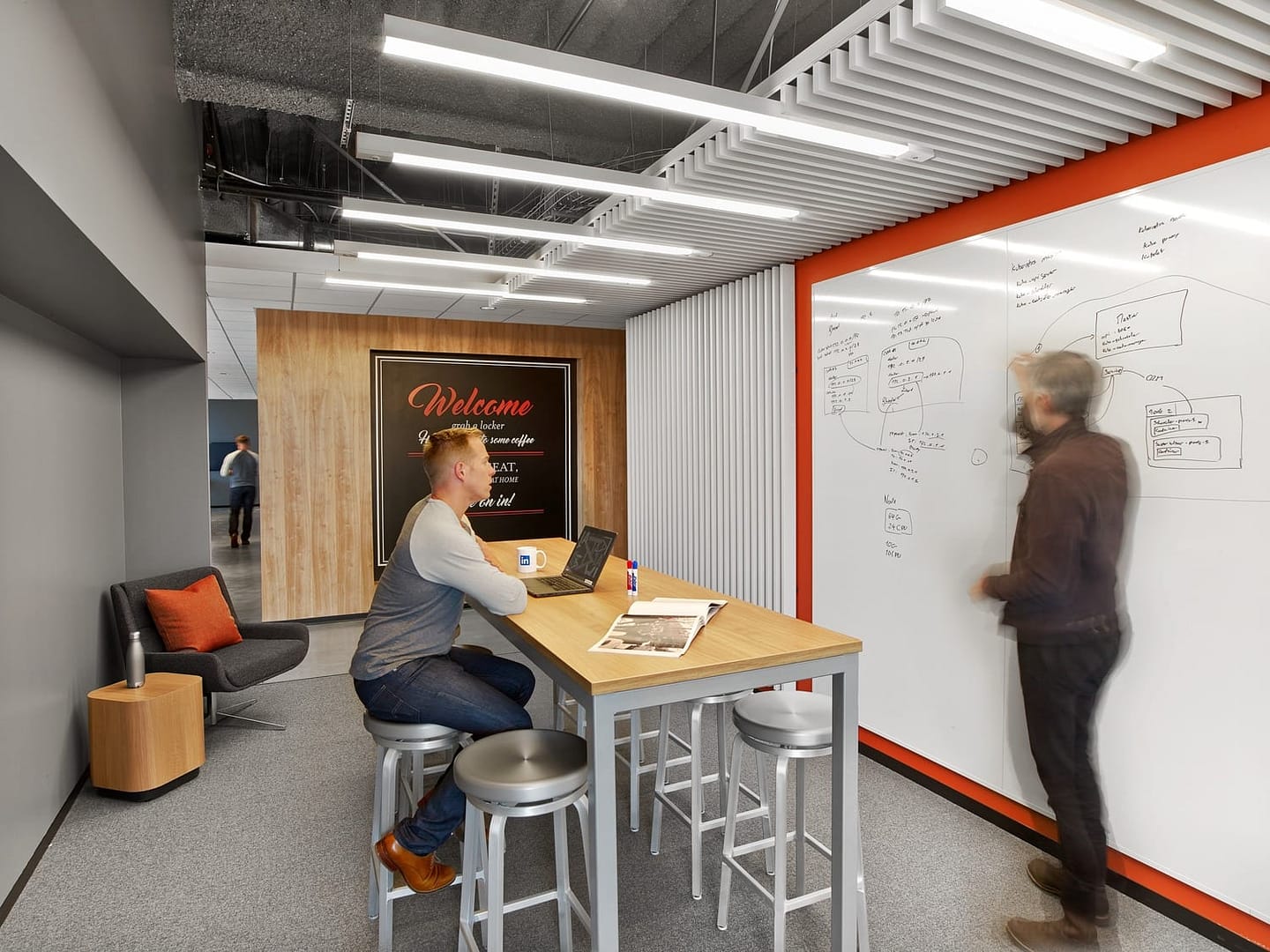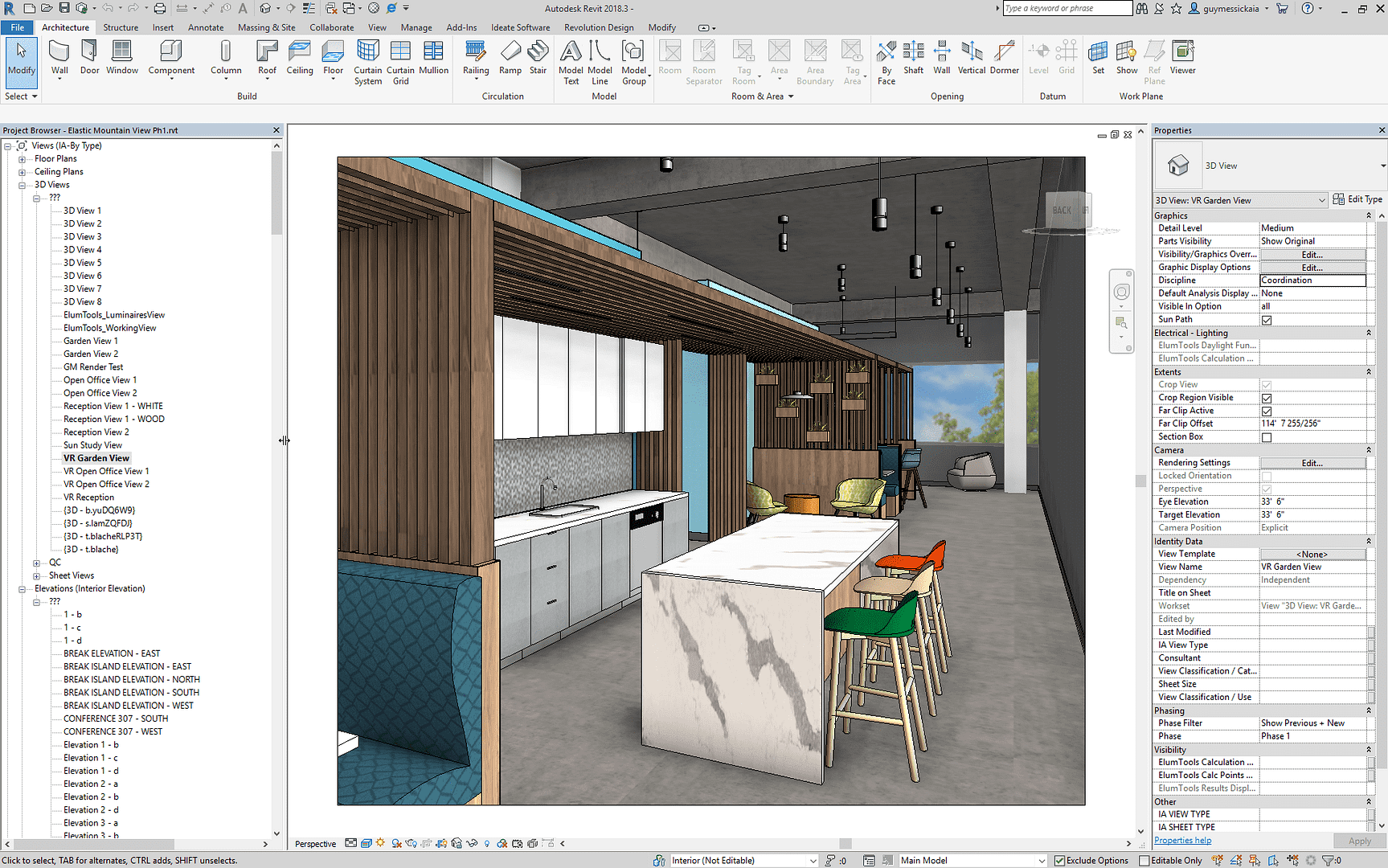
Confidential Client. Photography © Thomas McConnell.
This is the third in a series of three posts that reflect on the plethora of large and small factors—revealed during a casual panel discussion at the 2018 IA Global Summit—that should be considered when working across borders in Asia-Pacific. Here we focus on Revit and Artificial Intelligence; the human dimension; emerging technologies, and identify the one thing outsiders fail to grasp about the culture when working in each geography represented at the summit.
Background: In Seattle earlier this year, IA hosted four of its ASIA PACIFIC (APAC) IA Global partners at the 2018 IA Global Summit. With a network of partner affiliates in Europe, Middle East and Africa, Asia and Australia, Canada, and Latin America, IA Global leverages IA’s 30+ years of working worldwide with proven local expertise that understands cultural differences, local compliance requirements, and can easily navigate the unique aspects of regional architecture and construction. We work directly with our global partners to fine-tune best practices and communication as well as cross-border collaboration, and global summits allow us to maintain a high-performing, international project capability.
On day one of the 2018 summit, IA Director of Strategy James Truhan joined with alliance members from India, Australia, Singapore and Japan to identify the risks, focuses, and potential challenges that should be understood when working across APAC regions.
In this, the final post in the series, we look at the human dimension, emerging technologies in APAC, a design technology round-up, and key concepts worth remembering.
The Human Dimension
In Asia, much of the communication is non-verbal and primarily face-to-face. To add value, a practical knowledge of the culture and norms are critical, especially for those coming from outside of APAC. As a result, creating a highly effective, bespoke workplace solution for an APAC-based organization can’t be done remotely—especially when iteration and direct collaboration are required.
In India face-to-face collaboration is expected and a fundamental element of the culture. Dialogue and discussion is more to the point. Listening and responding forthrightly to feedback are valued more than the North American predilection for one way presentations. The process is iterative and relies on the expectation that finding a solution is rooted in the push/pull of design development through revision. Investing time in face-to-face engagement actually shortens the process as opposed to emailing back and forth, where there is a higher potential for misunderstanding.
Likewise, in Japan, meetings with clients generally rely on face-to-face engagement. While video conferencing supports dialogue when a face-to-face presence is impractical, for local clients, designer and client almost always meet face-to-face.
These face-to-face meetings bring with them several intricacies that might be confusing to those unfamiliar with Japanese business customs. For example, North American businesses will sometimes find themselves believing that they have reached a formal agreement with a Japanese counterpart, only to find out shortly afterwards that the feeling was not mutual. Often attributed to a desire to preserve harmony within a business relationship, it is not uncommon for Japanese business teams to put off discussion of concerns (or even outright rejections) until a later time so as to avoid creating tension, which can leave Western organizations feeling perplexed or even deceived, even though both teams may have had purely honest intentions. Like India, the process relies on an iterative approach and an acceptance of custom and culture to get to the right outcomes.
Emerging Technology in APAC
In India, with implementation costs decreasing, the Internet of Things is gaining momentum. Suddenly, individualized workplaces are within reach, where lighting, air conditioning, acoustics, and seat reservations are directly controllable by staff via mobile devices.
In Australia, privacy concerns are delaying adoption of digital workplace personalization, even though those concerns evaporate when using digital applications for personal purpose. That will change over time as generational expectations for frictionless on-the-fly workplace experiences override privacy concerns.
While the most prevalent technologies in Australia are collaborative tools like SharePoint, face-to face communication and collaboration are still primary success factors. As a result, whiteboards and scrum/collaboration tools are prevalent.
In Singapore, enhanced collaboration is the primary objective of most clients, and here too whiteboards and surfaces to write on are popular. AV solutions are part of the collaboration scenario, and there is a strong emphasis on the collaborative aspects of technology.
In Japan writable screens/monitors have been popular as well as going back to basic—whiteboards and writable surfaces that are easy to reuse.
Design Technology Round-Up
Revit
In North America, the ability to design in three dimensions and share dimensionally accurate 3D representations (example below) with both clients and contractors is a leading industry best practice. This has made Revit a powerful collaboration platform.
Although Japan is widely viewed as highly tech-oriented, Revit use is still in the early adoption phase. This in large part, is due to the fact that general contractors, vendors, and consultants are still heavily invested in legacy CAD-based platforms and have not yet transitioned.
By contrast, in Singapore, a geography with heavy investment in centrally funded large-scale infrastructure projects, the government mandates the use of Revit, which has accelerated broader industry adoption.
In India, global clients have embraced Revit based on an appreciation for its potential to shorten project durations. As a result, firms that are committed to Revit have an advantage on competitors. Paradoxically, subcontractors are not using the platform, so almost all project coordination is done via CAD. This introduces extra steps and complexity when conversions to and from CAD become necessary.
Finally, in APAC overall, the value of Revit is in achieving alignment and a unified view; making sure that the client understands the outcome in the same way that the designer and contractors understand it to avoid costly surprises further into the project.
Meanwhile, in North America, IA Interior Architects is moving forward to develop tools that extract and compile data from Revit to be viewed in a real time dashboard, like the one below, and provide vital information regarding the project’s progress, forecast outcomes, and support continuous improvement.
IA Interior Architects is also in the early evaluation stages of AI Design-Assist Platforms. While these offer the potential to accelerate portions of the design process (notably programming and test fits), they are not a replacement or substitute for the designer’s intuition and applied knowledge.
Key Concepts to Remember
Japan
People from Europe and North America understand Japan as part of the APAC geography, but Japan stands alone as a business culture with distinct practices, expectations, and economic and design/construction conditions. In particular, projects in Japan are very costly – driven by its import-reliant economy and high expectations for fit, finish, and process.
Designing for co-working, by contrast, is generalized design based on an assumption about what the market is looking for. In Japan, many co-working offices are being established around Tokyo, but because Japan is very company-based, the idea of co-working is still difficult to embrace and not yet that in high demand.
Singapore
Distinguished by respect for hierarchy, Singaporeans may not express a view contrary to leader direction. While a divergence of viewpoints may be easy to discern, an airing of those viewpoints may be unlikely, even if they are the best ideas or what everyone is thinking. Small focus groups can be helpful in coalescing decisions.
Australia
Australians have historically low respect for hierarchy; ideas, not rank win the day. All have an equal voice and what is said is what is meant.
India
In India hierarchy is very important, and it is sometimes hard to discern meaning from what is said. An additional issue is the business status associated with assigned desks. Global trends toward unassigned seating are at odds with a business culture that conflates position and status with an assigned desk.
This concludes our three-part series on the 2018 IA Global Summit. We hope you’ve enjoyed the read and found the content interesting. If you have any questions or comments, we invite you to contact IA Director of Strategy James Truhan (j.truhan@interiorarchitects.com), summit moderator.
Are You Caught Up?
This article was part 3 of a 3 part series. To start from the beginning, please click the link below.
IA is a global firm of architects, designers, strategists, and specialists. We focus exclusively on environments through the lens of interior architecture—a radical idea in 1984, when IA was founded. We are highly connected agents of change, committed to creativity, innovation, growth, and community.
IA is a global firm of architects, designers, strategists, and specialists. We focus exclusively on environments through the lens of interior architecture—a radical idea in 1984, when IA was founded. We are highly connected agents of change, committed to creativity, innovation, growth, and community.
More reflections on the IA | Interior Architects APAC Summit.




